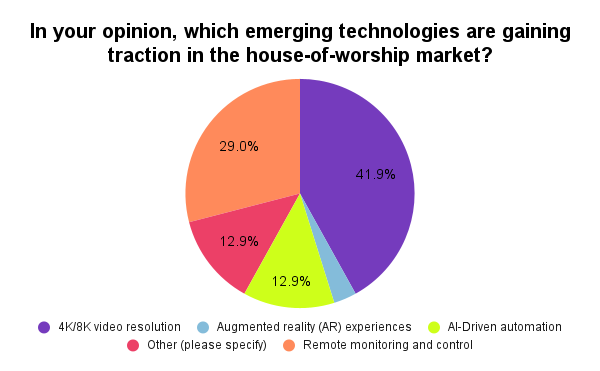September Temperature Check Results: HOW Market

At the height of the pandemic, we saw many houses of worship adopt streaming technology to allow people to worship from home, safe from the spread of disease. But now that we have transitioned into our hybrid world, rAVe [PUBS] wanted to know what houses of worship are doing now. That’s why focused our September Temperature Check on the house of worship (HoW) market. Here’s what our readers had to say…
Our first question was “What percentage of your projects are related to houses of worship?”

The majority of respondents said that less than 10% of their projects were related to houses of worship, with the rest of the results being fairly evenly split between 10-30%, 30-50% and more than 50%.
Carter Music, account manager at IPS Live, commented that in the wake of the pandemic, houses of worship are becoming more involved in AV. “I do feel as though, especially with the emphasis on video in the post-covid world, the HoW market is expanding. Churches are consistently doing more and more in terms of AV,” he said.

Our next question focused on what our readers think the most common challenges faced by AV integrators when working on HoW projects are and a significant majority of respondents agreed that budget constraints were the biggest obstacle.
In addition to budget constraints, Music pointed to AV staffing as another significant obstacle to AV integrators. “Of then majority of production teams are made up of volunteers,” Music said.

Our final question focused on what emerging technologies are gaining traction in the HoW market. The majority (41.9%) of respondents said 4K/8K video resolution was gaining traction, followed by 29% of respondents who said remote monitoring and control were gaining traction. Those who answered “other” claimed that streaming on multiple platforms and video production basics were gaining traction in the HoW market.
Music commented that it’s his opinion that remote monitoring and control technology is gaining traction in the HoW market because houses of worship have a volunteer base, so the technology allows the organizations to “do more with less people.”






